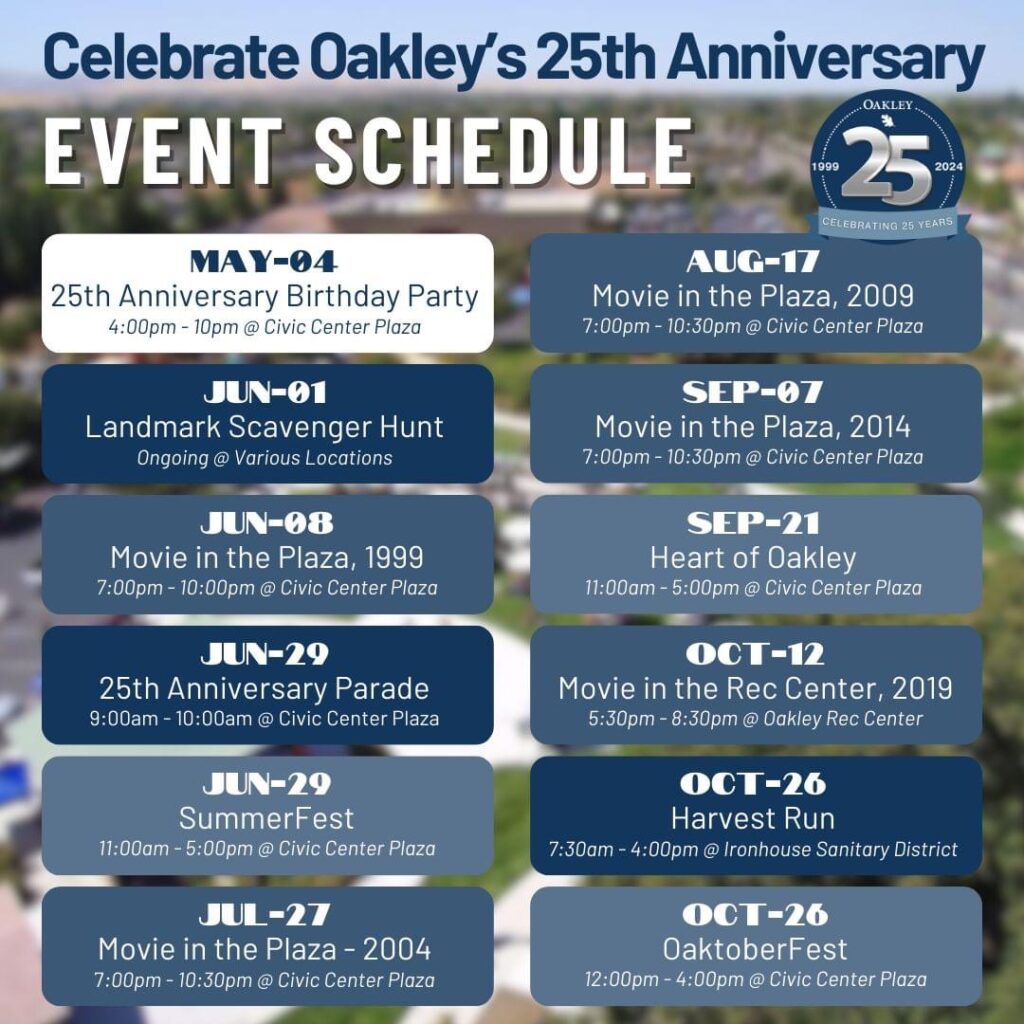Deadline for tickets: Monday, April 29
Join in on the 73rd National Day of Prayer as prayers are offered for our nation, state, cities & communities, schools, churches, families & youth, homeless & others in need, military & veterans, first responders, hospitals & medical personnel and businesses.
Space is limited to the first 85 attendees. RSVP and purchase tickets for $32.50 which includes tax and tip, at eventbrite. No profit is being earned from the sale of tickets as all proceeds will be paid to the restaurant.
Read MoreOpen House Saturday, April 27
This large, beautiful home has 6 bedrooms, 2 bonus rooms, and 4.5 bathrooms. One highly sought-after feature here is an en-suite (in-law) bedroom on the first floor. The kids can grab some blankets, popcorn, and get nice and cozy in the darkly painted theater room to immerse themselves into an amazing and safe movie experience! While, at the same time, you can escape to your primary suite for a relaxing experience as you soak in the large, jetted tub followed by a movie of your choice in your bedroom-sized retreat.
You will note the class and pride of ownership with upgraded cherry-wood kitchen and bathroom cabinets, 18 square marble tile foyer and kitchen floors, bordered by exquisite Venetian Mosaics, as well as the overall meticulous maintenance. The fireplace can be used by your choice of wood or gas. There are other great features like a water softener (owned), dual zone HVAC serviced annually by Champion, a finished/painted 3-car garage, a sink and cabinets the laundry room, and more! Nestled in the well-maintained Sterling Gate community, this beauty is very near walking trails, shopping, restaurants, and is in the Heritage High School district.
Very quiet inside!
See more photos and details by clicking here.
(Advertise your home for sale on the Herald websites. Email info@antiochherald.com or call (925) 457-5324).
Read MorePlenty of great community events and ways to serve
¡Celebra el Día de la Tierra 2024! Muchos grandes eventos comunitarios
Community activism is powerful and leads to real change!
By Contra Costa County District 1 Supervisor John Gioia
One of the best aspects of Earth Day is that everyone can participate. Everyone can be great because everyone can do something in their own community.
Join me and your neighbors at one of the great Earth Day events in West Contra Costa County. See you there!
Saturday, April 20, 2024
North Richmond Earth Day 2024: Volunteers will work on service projects at different sites in North Richmond, then come together for a fun community festival from 9am – Noon.
Hope Garden Planting Info Here Wildcat Creek Clean Up Info Here
El Cerrito Earth Day Celebration: Each year the City celebrates Earth Day with a morning of volunteerism and work parties. Join one of the many citywide work parties from 9 am to 12 noon, and a complimentary seedling giveaway by the El Cerrito Community Garden Network with the El Cerrito Garden Club at the City Corporation Yard (across from the El Cerrito Recycling + Environmental Resource Center) Info Here
Pinole Earth Walk: Join community in a walking pledge to protect the planet, with a three mile loop along the bay and creek starting and ending at Fernandez Park from 9am to noon. Info here.
Point Pinole Regional Shoreline Clean Up: Help cleanup Point Pinole! Bags, disposable gloves, and necessary supplies are provided. Info Here
El Sobrante Earth Day Community Cleanup: Earth Day book displays, gardening, speakers, entertainment and other fun and educational activities! Gather at 9:30am at El Sobrante Library 4191 Appian Way. Info here.
Unity Park Earth Day Celebration (Urban Tilth): The Earth Day Celebration is an event aimed at uniting the community to discover innovative methods for leading sustainable lives and nurturing our planet. Info here.
Wildcat Canyon Regional Park: Join the volunteer effort and a morning of Habitat Restoration at Wildcat Canyon Regional Park from 9am to 12pm! Info here
En Español
¡El activismo comunitario es poderoso y conduce a un cambio real!
Uno de los mejores aspectos del Día de la Tierra es que todos pueden participar. Todos pueden ser geniales porque todos pueden hacer algo en su propia comunidad.
Únase a mí ya sus vecinos en uno de los grandes eventos del Día de la Tierra en el condado de West Contra Costa.
¡Te veo allí!
sábado, 20 de abril
Día de la Tierra 2024 en North Richmond: Los voluntarios trabajarán en proyectos de servicio en diferentes lugares de North Richmond, luego se reunirán para un divertido festival comunitario de 9 am a 12 pm.
Información aquí. (Siembra en el jardín de la esperanza)
Información aquí. (La limpieza del arroyo Wildcat)
Celebración del Día de la Tierra en El Cerrito: Cada año, la ciudad celebra el Día de la Tierra con una mañana de voluntariado y grupos de trabajo. Únete a uno de los muchos grupos de trabajo en toda la ciudad de 9 am a 12 pm, y recibe una planta de regalo cortesía de la Red de Jardines Comunitarios de El Cerrito y el Club de Jardinería de El Cerrito en el Patio de la Corporación de la Ciudad (en frente del Centro de Reciclaje y Recursos Ambientales de El Cerrito). Información aquí.
Caminata de la Tierra en Pinole: Únete a la comunidad en un compromiso de caminata para proteger el planeta, con un recorrido de tres millas a lo largo de la bahía y el arroyo que comienza y termina en el Parque Fernández de 9 am a 12 pm. Información aquí.
Limpieza en Point Pinole: ¡Ayuda a limpiar Point Pinole! Se proporcionan bolsas, guantes desechables y suministros necesarios. Información aquí.
Limpieza Comunitaria del Día de la Tierra en El Sobrante: ¡Exhibiciones de libros del Día de la Tierra, jardinería, oradores, entretenimiento y otras actividades divertidas y educativas! Reúnete a las 9:30 am en la Biblioteca de El Sobrante en 4191 Appian Way. Información aquí.
Celebración del Día de la Tierra en el Parque Unity (Urban Tilth): La Celebración del Día de la Tierra es un evento dirigido a unir a la comunidad para descubrir métodos innovadores para llevar vidas sostenibles y cuidar nuestro planeta. Información aquí.
Parque Regional Wildcat Canyon: ¡Únete al esfuerzo voluntario y a una mañana de Restauración del Hábitat en el Parque Regional Wildcat Canyon de 9 am a 12 pm! Información aquí.
Read More
Free class to develop responsible, young drivers
By Isiah Thompson, Departmental Community and Media Relations Coordinator, Contra Costa County Probation Dept.
Martinez, CA – Contra Costa County Probation has renewed their partnership with California Highway Patrol (CHP) to prepare and develop responsible young drivers. The partners will host the CHP’s Start Smart classes at 50 Douglas Drive, Ste. 200, in Martinez. Dates will be offered in the future and will be posted on the Probation Department’s website and social media sites.
According to the National Highway Traffic Safety Administration, the leading cause of death for Americans 15-20 years old is motor vehicle collisions. The California Highway Patrol’s goal is to reduce the death rate among teenagers caused by these collisions. Start Smart provides teens and their parents/guardians with an interactive safe driving awareness class that will illustrate how poor choices behind the wheel of a vehicle can affect the lives of numerous people. Start Smart also focuses on the responsibilities of newly licensed drivers, the responsibilities of parents/guardians, and the collision-causing elements for new drivers, especially males, such as excessive speed, driving under the influence, and distracted driving. Start Smart teaches what precautions to take to stay safe, such as seatbelt safety, collision avoidance techniques, and what to do when involved in a collision.
“We are excited to host Smart Start. This partnership with California Highway Patrol provides youth in Contra Costa County with the opportunity to gain invaluable knowledge, that ultimately creates safer drivers, and safer communities,” said Esa Ehmen-Krause, Chief Probation Officer.
The classes are FREE to the participants, who will receive a certificate of completion that may be utilized to reduce vehicle insurance fees.
Read More
Interrupting a lethal moment: A multi-disciplinary panel discussion highlighting collaborative approaches to intervene in potentially lethal domestic violence in Contra Costa.
In Brentwood and San Pablo
This informative event will be held in three locations throughout the county to share information on how STAND!, law enforcement, and medical professionals are working together to interrupt high-risk events and interactions between intimate partner victims and offenders.
Panelists include Ashley Palomino, STAND! Intervention Support Services Manager, local law enforcement representatives, and medical experts in emergency treatment of domestic violence patients.
Registration is free. Register at http://standforfamiliesfreeofviolence.ticketspice.com/lap-speaker-series.
Read MoreBy Marc Joffe
 Like mom and apple pie, the public library seems so intrinsically good that it should be beyond criticism. But like any institution that consumes millions of tax dollars, public libraries should not be free from scrutiny. And the facts are that neighborhood libraries have largely outlived their usefulness and no longer provide value for the public money spent on them.
Like mom and apple pie, the public library seems so intrinsically good that it should be beyond criticism. But like any institution that consumes millions of tax dollars, public libraries should not be free from scrutiny. And the facts are that neighborhood libraries have largely outlived their usefulness and no longer provide value for the public money spent on them.
In this fiscal year, Contra Costa, Alameda, San Mateo and Santa Clara counties are collectively spending $270 million to operate their library systems, with some cities chipping in extra to finance extended operating hours. Contra Costa County is spending $20 million of state and county funds to build a new library in Bay Point, and El Cerrito voters may see a sales tax measure on the November ballot, part of which will go to building a new library as part of a transit-oriented development near a BART station.
The public library’s historical functions of lending physical books and enabling patrons to view reference materials are being made obsolete by digital technology. An increasing proportion of adults are consuming e-books and audiobooks in addition to or instead of printed books, with younger adults more likely to use these alternative formats.
In response, libraries have tried to reposition themselves as “third places:” alternatives to homes and offices where people can relax, learn, and socialize. But the private sector offers numerous third places of its own, with coffee houses being the most common.
In Walnut Creek, the public library has responded by adding its own coffee shop, but just a few minutes away, residents and visitors can relax and enjoy free wi-fi at the Capital One Café at no cost to taxpayers and without being required to buy a cup of joe.
While no third place used by the public can be guaranteed to be safe and clean, private operators have a stronger incentive to provide an attractive environment because they otherwise risk going out of business.
They also face fewer legal restraints in enforcing public decorum. A 1991 federal court decision prohibited a New Jersey public library from “barring patrons who are not reading, studying or using library materials, who harass or annoy others through noisy activities or by staring, or whose ‘bodily hygiene is so offensive’ that it is a nuisance to others.”
As the Antioch Herald reported in February, the Antioch library had to be temporarily closed after multiple incidents “including a couple having sex openly in the bathroom, a wanted criminal using a library computer who was later removed by Antioch police, a racist letter left on the service desk and intoxicated library patrons acting aggressively.” The Contra Costa Public Library, which operates the Antioch facility reopened it four days later after negotiating an emergency contract for private armed security and arranging for a patrol car to monitor the exterior.
Library advocates argue that their public terminals offer essential internet access to those in need. But some patrons use free internet access at the local library to view pornographic content, sometimes to the distress of other terminal users including children. And low-income individuals are eligible for the Federal Communications Commission’s Lifeline program which provides a free smartphone with internet access.
Like local post offices, neighborhood libraries once served an important community function but are now becoming increasingly irrelevant. And, as with post offices, libraries continue to receive funding because they enjoy support from a relatively small but vocal segment of the population, while the rest of us are usually too reluctant to question their utility.
Marc Joffe is a federalism and state policy analyst at the Cato Institute.
Read More
The City of Oakley, incorporated in July 1999, is one of California’s youngest cities. Residents enjoy a charming area with an abundant housing supply, quality schools, and a friendly atmosphere that truly make Oakley, “A Place for Families in the Heart of the Delta.” Learn more at either www.ci.oakley.ca.us or www.facebook.com/CityofOakley.
Read MoreFrom City of Oakley
In 2022, our community was gripped with the disappearance of Alexis Gabe, who was a local resident of ours. Our police department became deeply involved in her disappearance and quickly began operating as if Alexis met with foul play. This case ultimately became a case involving several jurisdictions in California and the State of Washington.
The suspect was the ex-boyfriend of Alexis and he was killed during the investigation, further hampering the efforts of local law-enforcement. Partial human remains were found in Amador County later that year and positively identified as those of Alexis. (See related article)
Alexis’ case will be featured on the program “On the Case with Paula Zahn” on April 24, 2024. The program will feature interviews with family members of Alexis and Oakley Police personnel. To see the program, you will need to be able to tune into the Investigation Discovery Channel (ID Channel).
Read More
22-year-old Jesus Ivan Dorantes Guzman held on $1,000,000 bail.
By Ted Asregadoo, PIO, Contra Costa District Attorney’s Office
Martinez, California – A 22-year-old man from Oregon has been charged by the Contra Costa District Attorney’s Office with a two-count felony complaint centering on a deadly crash that occurred in Concord on April 7th. (See related articles here and here)
Jesus Ivan Dorantes Guzman faces charges of a felony hit-and-run that resulted in the death or serious injury of another. He is also charged with child abuse for putting a minor in a situation that caused her death. The child abuse charge comes with a special allegation of great bodily injury.
The circumstances of the incident occurred around 5:20 am on April 7th. Dorantes Guzman was driving a vehicle with multiple passengers when he crashed on Northbound Interstate 680 at California State Route 242 in Concord. The vehicle overturned in a dirt area near the freeway.
The crash injured five individuals – three of whom are minors – and killed a 9-year-old girl. Dorantes Guzman fled the scene on foot after the crash. Days later, he was found by police officers in the City of Williams – which is in Colusa County.
Dorantes Guzman is currently in the Martinez Detention Facility and will be arraigned on the charges in Contra Costa County Superior Court in Martinez on April 15 at 1:30 pm. His bail has been set at $1,000,000.
Case No: 01-24-01483 | The People of the State of California v. Dorantes-Guzman, Jesus Ivan
Read More






























